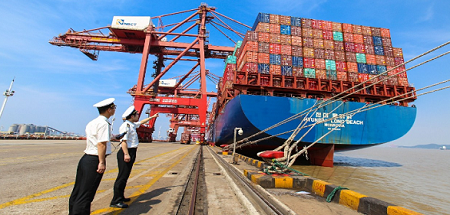How is customs inspection carried out?
 Mar 19, 2024|
Mar 19, 2024| View:98
View:98Customs control inspection of import and export goods is divided into computer control and manual control:
Computer control is that the customs first carries out risk analysis on the import and export goods in a certain period of time, and then classifies the goods according to the level of risk, and then sets the risk parameters.
Customs will set the high-risk parameter if there are several cases of smuggling violations in a certain commodity recently, or if there are many errors in the declaration of a certain commodity. The higher the risk parameter of import and export goods, the higher the probability of computer control.
Of course, most of the import and export goods have low risk parameters, and the customs will also set random control inspection ratio for these goods, which we call random control. In addition, the risk parameters are set according to the AEO certification level of the enterprise. The risk parameters of advanced certification are low, and the inspection rate of truth-breaking enterprises is almost 100%.

Manual control is the customs review documents, tax collection, inspection, release and other business links of the customs, in the audit of the declaration documents to import and export goods have doubts, can be manually operated in the customs business operating system to issue control instructions. In addition, the anti-smuggling department receives intelligence and will also request manual control to the customs business site.
Manual control can also be divided into five kinds of control instructions:
I. Manifest control means that the customs controls the goods with high risk after comprehensive risk analysis of various indicators of electronic data of manifest.
2. Scheduled control is to identify high-risk goods and enterprises as inspection targets through risk analysis, set parameters in the customs business system by relevant departments, and the computer automatically extracts documents containing such parameters, automatically locks the targets and issues inspection instructions. Its characteristics are: the elements of risk control are clear and specific, and the seizure rate is high.
3. Early warning control means that the customs sets conditional parameters in the customs business system according to the changes of risk factors such as the release of new policies and the commodity and trade situation, and prompts the high-risk goods and enterprises on the customs declaration form to remind the on-site inspection personnel to focus on the review, and then determine whether the inspection is needed according to the actual situation of the import and export goods.
4.Summary control refers to the on-site inspection personnel in the review of real-time declaration of import and export goods documents, some doubtful documents issued control instructions need to be examined.
5. Random control refers to the random spot check of customs declaration forms by the computer system after the customs sets a certain inspection proportion for low-risk import and export goods.

 +86-21-61406313
+86-21-61406313 Login query
Login query
 Login query
Login query



